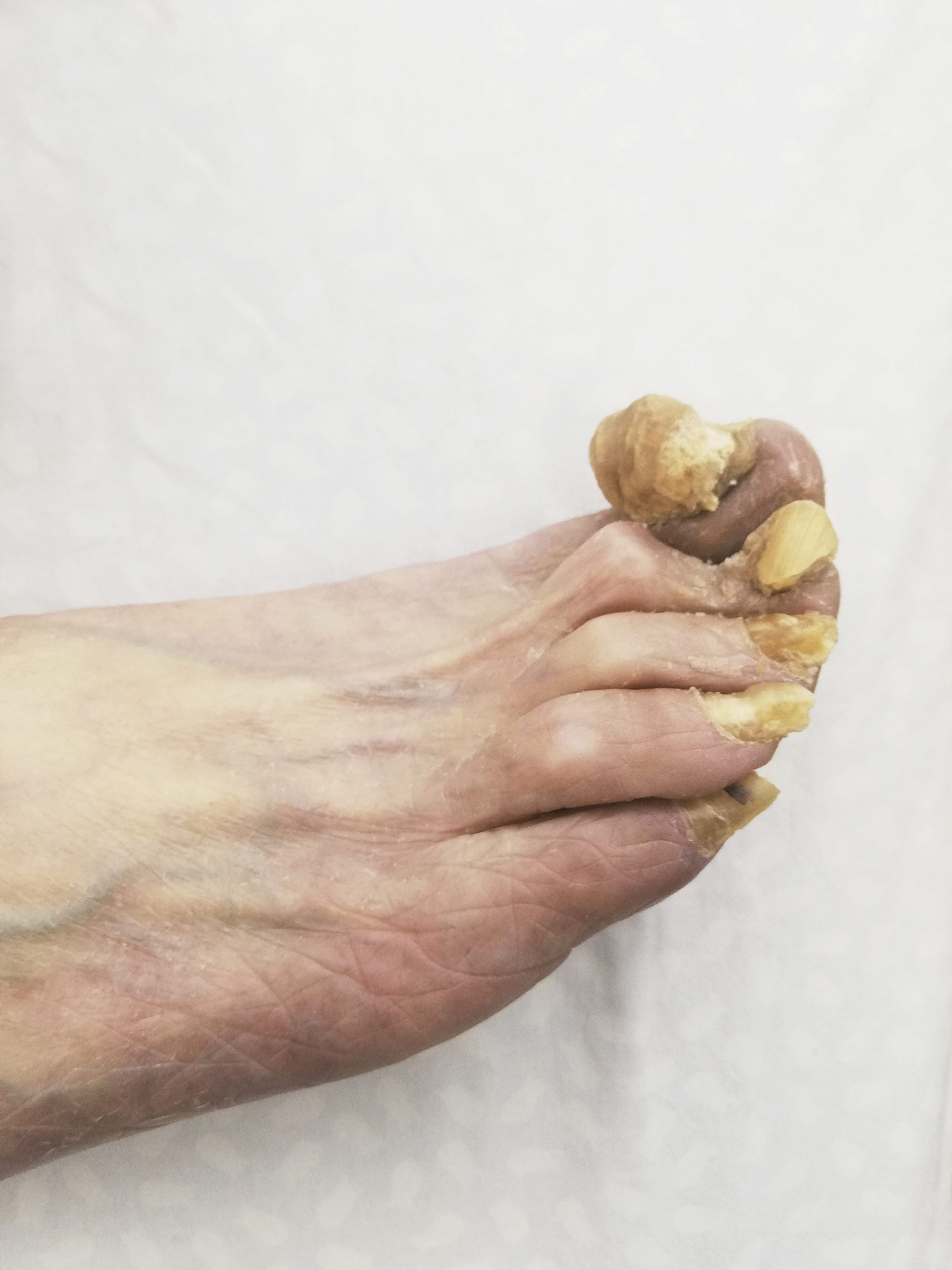
Onychomycosis is a common fungal infection that affects the nails, both toenails and fingernails. It is also known as tinea unguium. The condition occurs when certain types of fungi, such as dermatophytes, invade and infect the nails.
Onychomycosis can occur as a result of various factors, including prolonged exposure to warm and moist environments, wearing tight shoes, poor foot hygiene, trauma to the nail, weakened immune system, and certain medical conditions like diabetes.
The symptoms of onychomycosis may include:
- Thickened nails: The infected nails become thicker than usual.
- Discoloration: The nails may turn yellow, brown, or white.
- Brittleness: The nails become brittle and may break easily.
- Distorted shape: The infected nails may develop an abnormal shape.
- Crumbling or flaking: The nails may crumble or flake off.
- Separation: The nails may separate from the nail bed, causing pain or discomfort.
If left untreated, onychomycosis can spread to other nails and can cause further complications, such as cellulitis (skin infection), nail damage, and secondary bacterial infections.
Treatment options for onychomycosis include topical antifungal medications, oral antifungal medications, and in some cases, surgical removal of the infected nail. The choice of treatment depends on the severity of the infection, the type of fungus involved, and the patient’s overall health.
It is important to consult a healthcare professional, such as a dermatologist or podiatrist, for an accurate diagnosis and appropriate treatment plan for onychomycosis.
See More on Video

Overcoming Onychomycosis™ By Scott Davis The program can help you to treat your nail fungus naturally. Once you follow this program, you do not need to spend on expensive treatments to prevent a recurrence.